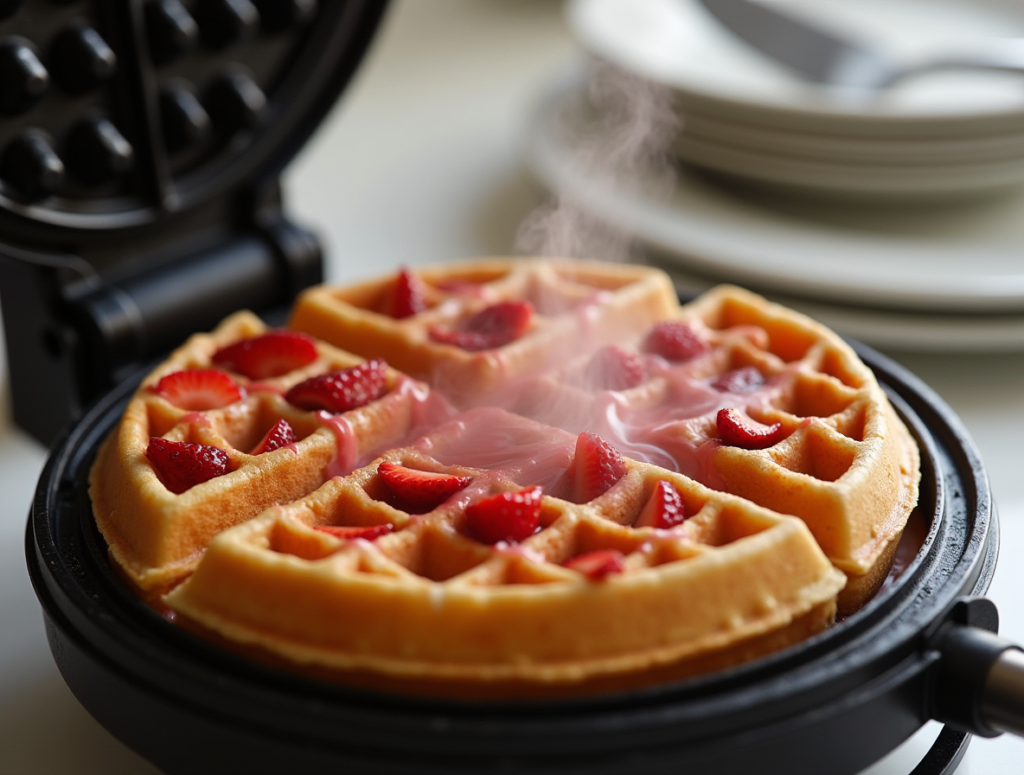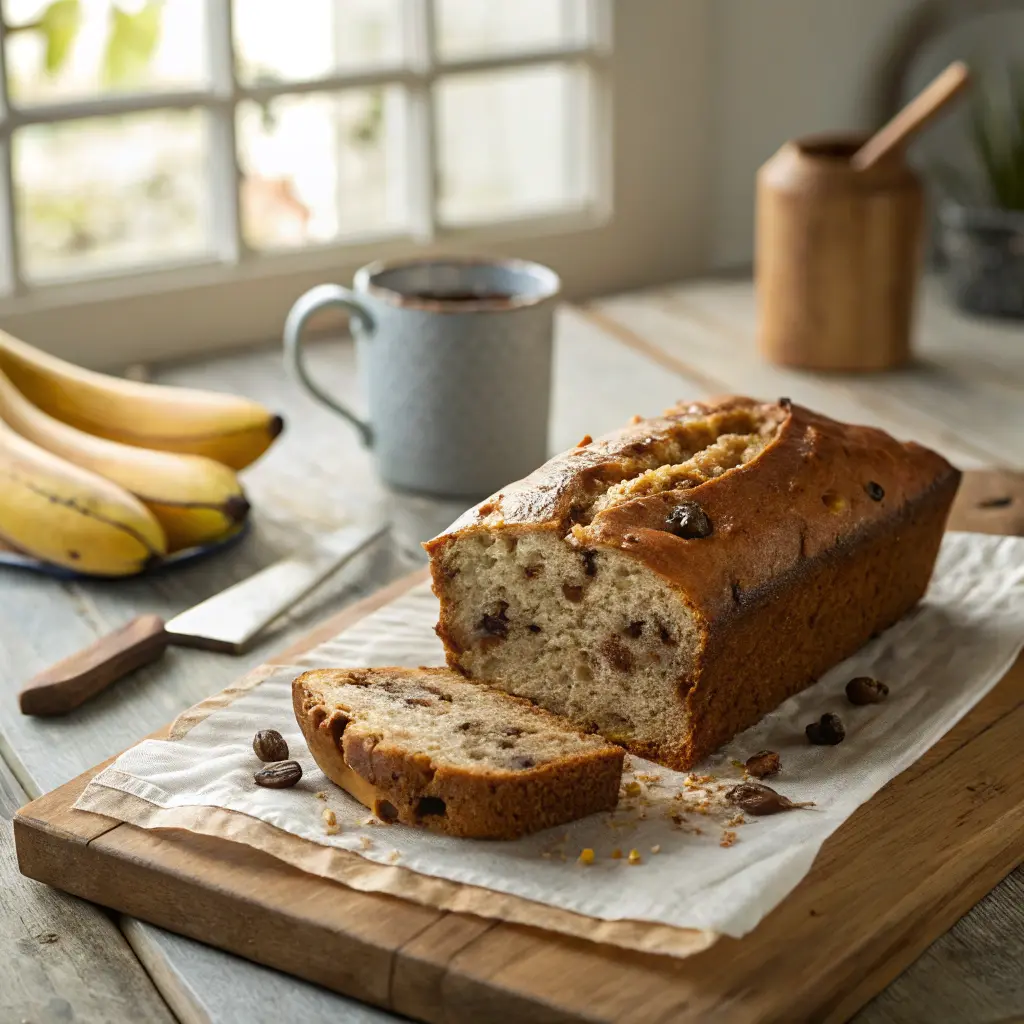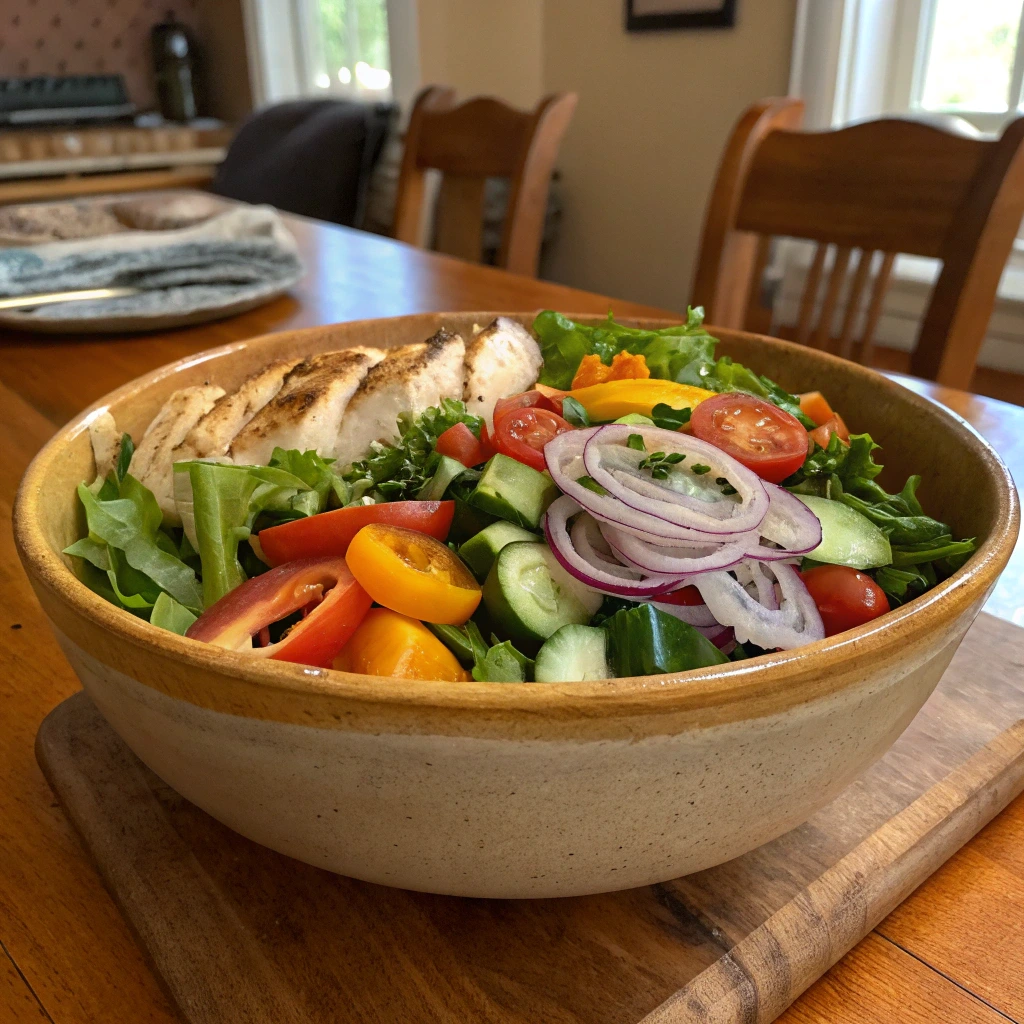Start your morning with a delightful combination of fluffy waffles and fresh strawberries. This strawberry waffle recipe blends the best of both worlds, offering a sweet and satisfying breakfast that’s perfect for any occasion. Whether you’re making a hearty breakfast for your family or preparing a special treat for guests, these strawberry waffles are sure to impress.
In this comprehensive guide, we’ll explore everything you need to know about creating the perfect strawberry waffles, from their history to creative toppings and healthier variations. If you’re curious about reheating waffles, check out our guide on putting waffles in the oven for tips to keep them crispy and delicious.
What is a Strawberry Waffle?
Definition and Characteristics
A strawberry waffle is a delicious twist on the classic waffle, incorporating fresh strawberries and often a creamy element like whipped cream or cream cheese. These waffles are typically golden brown, crispy on the outside, and soft and fluffy on the inside.
The vibrant red strawberries not only add a burst of flavor but also make the waffles visually appealing. This fresh strawberry waffle recipe is perfect for those who love the combination of sweet fruit and warm, comforting waffles.
What Sets It Apart from Traditional Waffles
While traditional waffles are beloved for their versatility and texture, strawberry waffles stand out due to their added fruity flavor and vibrant appearance. Here are a few ways they differ:
- Fruit Integration: Fresh strawberries are either mixed into the batter or used as a topping, providing natural sweetness and juiciness.
- Creamy Elements: Adding cream cheese or whipped cream introduces a creamy texture that complements the crispy waffle.
- Enhanced Presentation: The colorful strawberries make these waffles a feast for the eyes, perfect for Instagram-worthy breakfast photos.
These unique features make strawberry waffles homemade a delightful upgrade to your regular waffle routine.
Ingredients for the Perfect Strawberry Waffle Recipe
Batter Essentials (Flour, Eggs, Milk)
Creating the perfect strawberry waffle recipe starts with a well-balanced batter. Here are the essential ingredients:
- All-Purpose Flour: Provides structure and helps achieve a light, fluffy texture.
- Eggs: Act as a binding agent, giving the waffles richness and stability.
- Milk: Adds moisture to the batter, ensuring the waffles are soft inside.
- Baking Powder: Helps the waffles rise, creating a fluffy texture.
- Sugar: Sweetens the batter and aids in browning, giving the waffles a golden color.
- Butter or Oil: Adds richness and helps create a crispy exterior.
- Vanilla Extract: Enhances the overall flavor of the waffles.
Fresh vs. Frozen Strawberries
The choice between fresh and frozen strawberries can impact the flavor and texture of your homemade strawberry waffles:
- Fresh Strawberries: Provide the best flavor and texture, adding natural sweetness and juiciness to the waffles.
- Frozen Strawberries: A convenient alternative when fresh strawberries are not available. Ensure they are thawed and drained well to prevent excess moisture in the batter.
Using high-quality strawberries is key to making strawberry waffles homemade truly delicious.
Choosing the Best Strawberries
How to Select Fresh Strawberries
Selecting the right strawberries ensures the best taste and appearance for your strawberry waffle breakfast:
- Look for Bright Color: Choose strawberries that are deep red and vibrant, indicating ripeness and sweetness.
- Check Firmness: Fresh strawberries should be firm to the touch, without any soft or mushy spots.
- Smell Fresh: A sweet aroma is a good indicator of fresh, flavorful strawberries.
Substitutions and Alternatives (e.g., Frozen Berries)
If fresh strawberries are out of season or unavailable, you can use frozen berries as a substitute:
- Frozen Strawberries: Thaw and drain well before using to avoid adding excess moisture to the batter.
- Mixed Berries: Combine strawberries with other berries like blueberries or raspberries for a varied flavor profile.
These alternatives allow you to enjoy strawberry waffles from scratch year-round.
Step-by-Step Guide to Making Strawberry Waffles
Mixing the Batter
Follow these steps to create a smooth and well-balanced batter for your strawberry waffle dessert:
Ingredients:
- 2 cups all-purpose flour
- 2 tablespoons sugar
- 1 tablespoon baking powder
- 1/2 teaspoon salt
- 2 large eggs
- 1 3/4 cups milk
- 1/2 cup melted butter or oil
- 1 teaspoon vanilla extract
- 1 cup fresh strawberries, sliced
Directions:
- Combine Dry Ingredients: In a large mixing bowl, whisk together the flour, sugar, baking powder, and salt until well combined.
- Mix Wet Ingredients: In another bowl, beat the eggs and then add the milk, melted butter (or oil), and vanilla extract. Mix until smooth.
- Combine Wet and Dry: Gradually pour the wet mixture into the dry ingredients, stirring gently until just combined. Avoid overmixing to keep the batter light.
- Fold in Strawberries: Gently fold in the sliced strawberries, ensuring they are evenly distributed throughout the batter.
- Preheat the Waffle Iron: Heat your waffle iron according to the manufacturer’s instructions and lightly grease it with melted butter or oil.
Cooking the Waffles in the Waffle Iron
- Pour the Batter: Spoon the batter onto the center of the preheated waffle iron, spreading it evenly.
- Cook Until Golden Brown: Close the waffle iron and cook for about 4-5 minutes, or until the waffles are golden brown and crispy on the outside.
- Remove and Cool: Carefully remove the waffles from the iron and place them on a wire rack to maintain their crispiness.
Plating and Serving
Serve your strawberry waffles homemade with your favorite toppings for an irresistible breakfast treat:
- Fresh Strawberries: Add extra slices on top for a burst of flavor.
- Whipped Cream: A dollop of whipped cream adds creaminess and richness.
- Maple Syrup: Drizzle generously for sweetness.
These easy strawberry waffles are sure to become a favorite in your household.

Tips for Fluffy and Crispy Waffles
Avoid Overmixing the Batter
Overmixing can lead to dense and tough waffles. To keep your waffles light and airy:
- Mix Just Until Combined: Stir the wet and dry ingredients until they are just combined, leaving a few lumps in the batter.
- Gentle Folding: Fold in the strawberries gently to maintain the batter’s lightness.
Ideal Waffle Iron Temperature
Maintaining the correct temperature ensures your waffles are perfectly cooked:
- Preheat Thoroughly: Ensure your waffle iron is fully heated to the recommended temperature before adding the batter.
- Consistent Heat: Avoid opening the waffle iron too early, as this can cause the waffles to cook unevenly.
Following these tips will help you achieve fluffy strawberry cheesecake waffles with a crispy exterior.
Delicious Strawberry Toppings and Syrups
Freshly Sliced Strawberries and Whipped Cream
Enhance your strawberry waffles with whipped cream by adding:
- Extra Strawberries: Freshly sliced strawberries provide additional sweetness and juiciness.
- Whipped Cream: A generous dollop of whipped cream adds a creamy texture that complements the strawberries.
Homemade Strawberry Syrup
Create a flavorful homemade strawberry syrup to drizzle over your waffles:
- Ingredients:
- 1 cup fresh strawberries, chopped
- 1/2 cup sugar
- 1/2 cup water
- 1 teaspoon lemon juice
- Directions:
- Cook Strawberries: In a saucepan, combine strawberries, sugar, and water. Bring to a boil, then reduce heat and simmer for 10-15 minutes until the strawberries break down.
- Blend and Strain: Use an immersion blender to puree the mixture, then strain through a fine mesh sieve to remove seeds.
- Add Lemon Juice: Stir in the lemon juice and simmer for another 2-3 minutes until the syrup thickens slightly.
- Cool and Store: Let the syrup cool before drizzling over your strawberry waffles homemade.
This strawberry syrup waffles recipe adds a sweet and fruity touch to your breakfast.
Creative Add-Ons for a Gourmet Experience
Crushed Graham Crackers
Add a crunchy texture to your creamy strawberry waffles by sprinkling crushed graham crackers:
- Preparation: Crush graham crackers into small pieces and sprinkle them over the top of the waffles.
- Flavor: This adds a sweet and crunchy element that complements the softness of the waffles.
Drizzles of White Chocolate or Caramel
Elevate your strawberry and cream cheese waffles with decadent drizzles:
- White Chocolate Drizzle: Melt white chocolate and drizzle it over the waffles for a sweet and creamy finish.
- Caramel Drizzle: Make a simple caramel sauce by melting sugar and butter, then drizzle it over the top for a rich flavor.
These creative add-ons turn your strawberry cheesecake waffle breakfast into a gourmet delight.
Healthier Strawberry Waffle Options
Whole Wheat and Low-Sugar Batter
Make your easy strawberry waffles healthier by modifying the batter:
- Whole Wheat Flour: Substitute all-purpose flour with whole wheat flour for added fiber and nutrients.
- Low-Sugar Options: Reduce the sugar by half or use natural sweeteners like honey or maple syrup to lower the refined sugar content.

Vegan and Gluten-Free Adaptations
Cater to dietary restrictions with these vegan strawberry waffle recipes:
- Vegan Ingredients: Replace eggs with flax eggs or applesauce, and use dairy-free milk and butter alternatives.
- Gluten-Free Flour: Use a gluten-free flour blend to make the waffles suitable for those with gluten sensitivities.
These adaptations ensure that everyone can enjoy delicious and healthy gluten-free strawberry waffles.
Serving Strawberry Waffles for Special Occasions
Waffle Bar Ideas for Brunch
Create an interactive and fun dining experience with a waffle bar for brunch:
- Variety of Toppings: Offer a range of toppings such as fresh strawberries, whipped cream, chocolate chips, nuts, and syrups.
- Customization: Let guests customize their strawberry waffles homemade with their preferred toppings and fillings.
- Decorative Setup: Arrange toppings in stylish bowls and label them for easy access, enhancing the overall presentation.
Holiday-Themed Strawberry Waffles
Celebrate holidays with festive strawberry waffle dessert creations:
- Heart-Shaped Waffles for Valentine’s Day: Use a heart-shaped waffle maker to create themed waffles.
- Holiday Decorations: Add sprinkles, colored icing, or edible glitter to match the holiday spirit.
These themed presentations make your strawberry waffle breakfast a standout addition to any celebration.

How to Store and Reheat Strawberry Waffles
Proper Storage Tips to Maintain Freshness
Ensure your strawberry waffles stay fresh and delicious:
- Refrigeration: Store cooked waffles in an airtight container in the refrigerator for up to three days.
- Freezing: Place waffles in a single layer on a baking sheet and freeze until solid. Transfer to a freezer-safe bag or container and store for up to two months.
Best Ways to Reheat Without Losing Texture
Reheat your waffles properly to retain their crispy exterior and soft interior:
- Oven Method: Preheat the oven to 350°F (175°C). Place the waffles on a baking sheet and bake for 5-7 minutes until heated through.
- Toaster Oven: Reheat in a toaster oven for 3-4 minutes to quickly restore crispiness.
- Air Fryer: Use an air fryer set to 350°F for 2-3 minutes to achieve a crispy finish without drying out the waffles.
Avoid using a microwave, as it can make the waffles soggy and chewy instead of crispy.
Perfect Pairings: Drinks to Enjoy with Strawberry Waffles
Coffee, Tea, and Smoothies
Enhance your strawberry cheesecake waffles experience with the perfect beverages:
- Coffee: A hot cup of coffee complements the sweet and creamy waffles, providing a balanced and satisfying meal.
- Tea: Choose herbal teas like chamomile or green tea for a light and refreshing pairing.
- Smoothies: Blend fresh fruits, yogurt, and a splash of juice for a healthy and refreshing smoothie that pairs well with your waffles.
Fresh Juices and Mimosas
Add a refreshing and festive touch to your meal with these drink pairings:
- Fresh Orange Juice: A classic breakfast staple that adds a tangy contrast to the sweet waffles.
- Mimosas: Mix champagne with orange juice for a celebratory brunch drink that enhances the overall dining experience.
These beverage options enhance the overall dining experience, making your strawberry waffles homemade meal even more enjoyable.
Common Mistakes and How to Avoid Them
Achieving the right batter consistency is crucial for perfect waffles:
- Too Thick: If the batter is too thick, the waffles may not spread evenly, resulting in dense textures. Add a little more milk to thin the batter.
- Too Runny: If the batter is too runny, the waffles may become overly crispy and hard. Add a bit more flour to thicken the batter.
Uneven Cooking Due to Incorrect Waffle Iron Temperature
Ensure your waffle iron is at the correct temperature to cook the waffles evenly:
- Proper Preheating: Always preheat the waffle iron to the recommended temperature before adding the batter.
- Consistent Heat: Maintain a consistent heat setting to prevent the waffles from burning or remaining undercooked.
Using the Wrong Waffle Mold
Choosing the appropriate waffle mold is essential for achieving the desired shape and texture:
- Standard vs. Specialized Molds: Use standard waffle irons for classic waffles or specialized molds for unique shapes like hearts or animals.
- Quality of the Waffle Iron: Invest in a high-quality waffle iron with a non-stick surface to ensure even cooking and easy removal of the waffles.
Avoiding these common mistakes ensures that your strawberry cheesecake waffles turn out perfectly every time.
FAQs About Strawberry Waffle Recipes
How to make a fanned strawberry?
Slice the strawberry thinly, but keep the top intact, then gently spread the slices to create a fan shape.
Can you put fruit in a waffle maker?
Yes, but it’s best to chop the fruit finely. However, adding too much fruit may cause sticking.
Can you use candy melts on strawberries?
Yes, candy melts coat strawberries well. However, they must be melted carefully to avoid burning.
Which chocolate is best for strawberries?
Dark or semi-sweet chocolate works best because it balances the fruit’s sweetness. Additionally, white chocolate can be used for a milder taste.
How to make strawberry butterflies?
Cut the strawberry lengthwise, then slice each half into wings. Arrange the slices to form a butterfly shape.
How to macerate strawberries without sugar?
Use honey, orange juice, or balsamic vinegar instead of sugar to enhance the strawberries’ natural sweetness.
How to crush strawberries?
Place strawberries in a bowl and mash them with a fork or use a blender for a smoother texture. However, be careful not to over-blend if you want some chunks.
How much sugar to macerate strawberries?
Use 1-2 tablespoons of sugar per cup of strawberries. However, adjust based on your taste and the natural sweetness of the fruit.
Conclusion: Enjoy the Ultimate Strawberry Waffle Recipe
Creating the perfect strawberry waffle recipe involves understanding the essential ingredients, using the right equipment, and following precise cooking techniques. Remember to:
- Choose High-Quality Ingredients: Use fresh strawberries, good-quality cream cheese, and the right flours for the best flavor and texture.
- Balance the Batter: Ensure the batter consistency is just right to achieve crispy yet fluffy waffles.
- Experiment with Flavors: Enhance your waffles with both sweet and savory toppings to suit any occasion.
Don’t hesitate to experiment with different recipes and flavor combinations. Whether you’re trying a classic homemade strawberry cheesecake waffle recipe or adding unique toppings like whipped cream and crushed graham crackers, strawberry waffles offer endless possibilities for creativity and deliciousness. Share your creations with family and friends, and enjoy the delightful experience of making and savoring these mouthwatering treats together.




